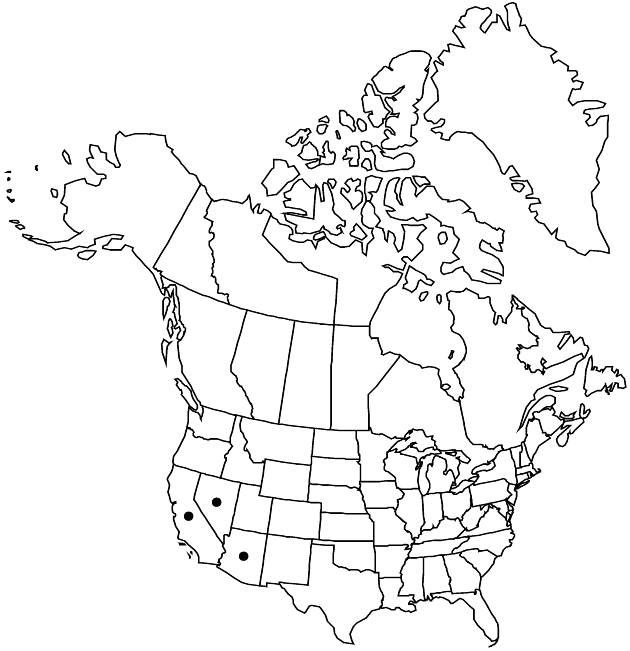Difference between revisions of "Bahiopsis parishii"
Bot. J. Linn. Soc. 140: 72. 2002.
FNA>Volume Importer |
FNA>Volume Importer |
(No difference)
| |
Revision as of 18:48, 24 September 2019
Shrubs, 50–130 cm. Leaves mostly opposite, sometimes alternate (distal); petioles 2–8 mm; blades deltate to deltate-ovate, 1–3.5 × 1–3.5 cm, margins usually toothed, faces: abaxial hispid and gland-dotted (and slightly reticulate), adaxial scabrous, (bases of hairs notably enlarged). Heads (1–)3–5. Peduncles 1–15 cm. Involucres hemispheric, 8–13 × 5–9 mm. Paleae ovate to oblong, 5.5–7 mm. Phyllaries 16–28, 3–9 × 1.5–2 mm. Ray florets 8–15; laminae 10–15 mm. Disc florets 50+; corollas 3.5–5 mm. Cypselae 2.7–3.2 mm; pappi of 2(–6) lacerate, aristate scales 2.1–2.5 mm plus (0–)2–6 lacerate scales 0.5–1 mm. 2n = 36.
Phenology: Flowering (Jan–Oct).
Habitat: Xeric scrub
Elevation: 500–1500 m
Distribution

Ariz., Calif., Nev., Mexico (Baja California, Sonora).
Discussion
Bahiopsis parishii is a diploid that is closely related to polyploids that have traditionally been recognized as varieties of B. (Viguiera) deltoidea and occur throughout the Baja California Peninsula in Mexico.
Selected References
None.
